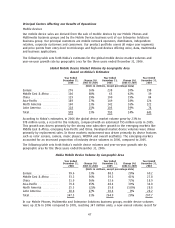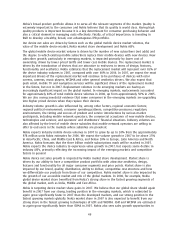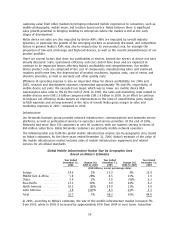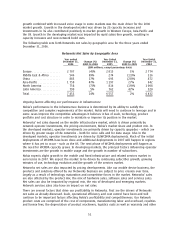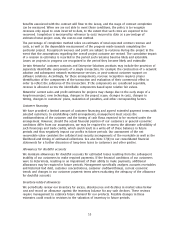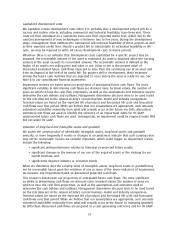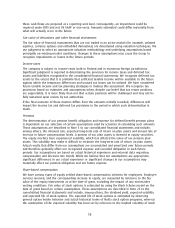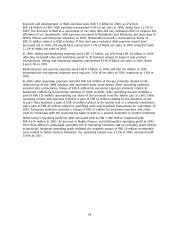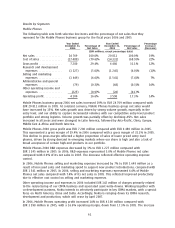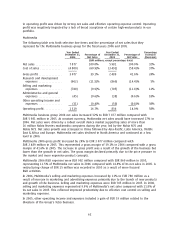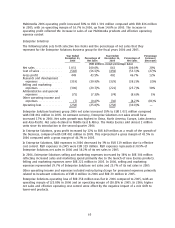Nokia 2006 Annual Report Download - page 56
Download and view the complete annual report
Please find page 56 of the 2006 Nokia annual report below. You can navigate through the pages in the report by either clicking on the pages listed below, or by using the keyword search tool below to find specific information within the annual report.benefits associated with the contract will flow to the Group, and the stage of contract completion
can be measured. When we are not able to meet those conditions, the policy is to recognize
revenues only equal to costs incurred to date, to the extent that such costs are expected to be
recovered. Completion is measured by reference to costs incurred to date as a percentage of
estimated total project costs, the costtocost method.
The percentage of completion method relies on estimates of total expected contract revenue and
costs, as well as the dependable measurement of the progress made towards completing the
particular project. Recognized revenues and profit are subject to revisions during the project in the
event that the assumptions regarding the overall project outcome are revised. The cumulative impact
of a revision in estimates is recorded in the period such revisions become likely and estimable.
Losses on projects in progress are recognized in the period they become likely and estimable.
Certain Networks’ customer contracts and Enterprise Solutions products may include the provision of
separately identifiable components of a single transaction, for example the construction of a network
solution and subsequent network maintenance services, or postcontract customer support on
software solutions. Accordingly, for these arrangements, revenue recognition requires proper
identification of the components of the transaction and evaluation of their commercial effect in
order to reflect the substance of the transaction. If the components are considered separable,
revenue is allocated across the identifiable components based upon relative fair values.
Networks’ current sales and profit estimates for projects may change due to the early stage of a
longterm project, new technology, changes in the project scope, changes in costs, changes in
timing, changes in customers’ plans, realization of penalties, and other corresponding factors.
Customer financing
We have provided a limited amount of customer financing and agreed extended payment terms with
selected customers. In establishing credit arrangements, management must assess the
creditworthiness of the customer and the timing of cash flows expected to be received under the
arrangement. However, should the actual financial position of our customers or general economic
conditions differ from our assumptions, we may be required to reassess the ultimate collectibility of
such financings and trade credits, which could result in a writeoff of these balances in future
periods and thus negatively impact our profits in future periods. Our assessment of the net
recoverable value considers the collateral and security arrangements of the receivable as well as the
likelihood and timing of estimated collections. See also Note 37(b) to our consolidated financial
statements for a further discussion of longterm loans to customers and other parties.
Allowances for doubtful accounts
We maintain allowances for doubtful accounts for estimated losses resulting from the subsequent
inability of our customers to make required payments. If the financial conditions of our customers
were to deteriorate, resulting in an impairment of their ability to make payments, additional
allowances may be required in future periods. Management specifically analyzes accounts receivables
and historical bad debt, customer concentrations, customer creditworthiness, current economic
trends and changes in our customer payment terms when evaluating the adequacy of the allowance
for doubtful accounts.
Inventoryrelated allowances
We periodically review our inventory for excess, obsolescence and declines in market value below
cost and record an allowance against the inventory balance for any such declines. These reviews
require management to estimate future demand for our products. Possible changes in these
estimates could result in revisions to the valuation of inventory in future periods.
55




